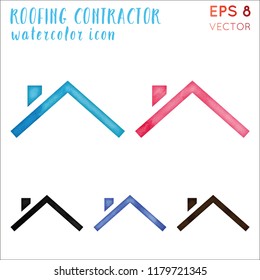Prior To Starting Your Paint Project, It Is Essential To Comprehend The Key Differences Between Exterior And Interior Paint. This Understanding Can Substantially Affect The Success Of Your Job
Prior To Starting Your Paint Project, It Is Essential To Comprehend The Key Differences Between Exterior And Interior Paint. This Understanding Can Substantially Affect The Success Of Your Job
Blog Article
Uploaded By-Fitzpatrick Henry
When you're choosing between interior and exterior paint, it's necessary to understand their fundamental differences that impact both efficiency and looks. Interior paints are crafted for lower VOC levels and smoother finishes, making them optimal for indoor areas, while outside paints are designed to sustain harsh climate condition and UV exposure. Each kind serves an unique objective, but knowing when to use one over the other can substantially affect your job's outcome. So, what elements should you think about when making your option?
Make-up and Formulation
When choosing in between exterior and interior paint, recognizing their structure and formulation is essential. Inside paints generally have a lower quantity of unpredictable organic substances (VOCs), making them safer for interior air high quality. You'll observe they usually have a smoother finish, which boosts their capability to resist discolorations and allows for less complicated cleaning. They're developed to stand up to the rigors of indoor environments, including varying humidity degrees and temperature variations.
On the other hand, outside paints are created to withstand harsher problems. They typically consist of greater degrees of pigments and ingredients to withstand fading from UV rays, along with to stop mold and mold growth. Their composition includes extra binders and resins, which provide better adhesion to surface areas revealed to the aspects. This guarantees the paint can hold up against rainfall, snow, and fluctuating temperature levels without peeling or breaking.
Efficiency and Sturdiness
Reviewing performance and durability is important when picking in between interior and exterior paint. Interior paint is developed for surfaces that experience less deterioration. It typically stands up to fading and scuffing, making it optimal for living rooms and rooms. Nevertheless, Learn Alot more Here may not hold up well in high-moisture areas like kitchens and bathrooms without appropriate formulation.
On the other hand, outside paint encounters harsher problems. It's crafted to stand up to UV rays, rain, and temperature level variations. This kind of paint usually contains ingredients that protect against mold and mildew and mildew development, guaranteeing long life in various environments. When you use outside paint, you can expect it to last a number of years much longer than indoor paint, gave it's applied properly.
Another essential difference depends on the coating choices. Interior paints often have a selection of coatings for aesthetic allure, while outside paints prioritize resilience over sheen. If you're trying to find something that can take care of the components, exterior paint is your best bet.
In contrast, if you're concentrated on indoor aesthetic appeals with less issue for extreme conditions, indoor paint could be appropriate. Ultimately, your choice must straighten with the specific needs of the atmosphere.
Aesthetic Considerations
A fresh coat of paint can change an area, however aesthetic considerations play a vital function in your choice in between exterior and interior choices. When you're selecting paint, think of the state of mind you intend to produce. Inside paint allows you to discover a broader series of colors and finishes, allowing you to express your personal style and boost your home's atmosphere. Whether you select soft pastels or strong colors, the ideal indoor paint can make your spaces feel comfortable, vivid, or tranquil.
On the other hand, outside paint needs to straighten with your home's design and the surrounding environment. Here, you're not simply making a design statement; you're also taking into consideration visual appeal. Choosing colors that integrate with your area can enhance your home's value and aesthetic appeal. Keep in mind that exterior paint is additionally subject to fading and climate modifications, so selecting an ageless shade can save you from constant repainting.
Inevitably, consider how each choice fits your vision. By aligning your paint option with your preferred aesthetic, you can develop areas that show your personality while keeping functionality.
Conclusion
When it concerns selecting paint, comprehending the crucial differences in between interior and exterior alternatives is important. https://dominickszgnu.howeweb.com/31985880/a-necessary-overview-for-novices-to-choosing-the-right-paint-complete-for-your-project focus on visual appeals and reduced VOCs, making them excellent for improving your indoor areas. On the other hand, exterior paints are developed for toughness and weather condition resistance, protecting your home from the elements. By considering your specific requirements and the atmosphere, you can with confidence pick the appropriate paint to achieve the look and longevity you prefer for your space.
